Tuesday, January 11, 2005
How to Eliminate the Good, Bad, & Ugly
I am not here to tell you how to write. This is something for you to decide. What I will do is give you certain guidelines that will improve your writing process, and to a further extent remove your negative concepts, or we could say, habitual patterns around the creative urge.
When do you write? What inspires you? Why do you write? What is the intention behind your work? All these questions are important steps artists take before we begin our works. They create clarity for us. They insure that we are taking the time to create a positive environment in which to create. Some of you may even have other criteria: the room has to be dark, you have to be alone, the phone needs to be off, and so on. Whatever the scenario, it becomes of the utmost importance to make sure the environment you create matches your sensibilities. Naturally, you might say. No shit. Well, okay. Lets put these questions to you. Let us see just how detailed we are about our own processes. You just might be surprised about how detailed you are.
Answer the following questions as honestly as you can. Be petty, particular, incredibly meticulous:
1. When do you write?
2. What inspires you?
3. Does your work space match your ideal?
Okay, a nice beginning. Some of you might be going home to make adjustments. Others might just be pleased at how the ideal is working for them. Wonderful. Now lets change the scenario. What would happen if you changed your ideal? What if none of these criteria mattered?
Some of you might be having a heart attack right about now. What is he saying? Change? No, not exactly. I’m not saying this is an absolute necessity. Just something to consider. A lot of times we have become so used to our space being a certain way, that we are unable to envision it changing. Neither perspective is better than the other. I just wanted to introduce the possibility of change. Who knows? Maybe, by the end of this workshop some of you may be more willing to experiment with your environment. If this feels right to you, go for it. No one can tell you how you’re writing space needs to be. I, myself, write in complete disarray, papers piled around me, in cramped spaces, somewhat akin to a dungeon. I don’t particularly care what time it is. I write when I feel like it. Still, there are times when I consider these questions.
Now lets look at the other questions mentioned earlier: Why do you write? and What is the intention behind your work? These are colossal questions. Some of you may have never considered them. Don’t worry about it. Now you can. Answer the questions the same as before. Be petty and meticulous. Be my guest.
4. Why do you write?
5. What is the intention behind your work?
Why are these questions important? some of you might ask. Well, I’ll tell you smarty-pants. Writing is different for each person. For some of you, these questions might not be important. You already know why you write. It’s to get published, be famous, get on Oprah, save the whales, get laid, whatever. Fine. At least you know where you stand. No one can tell you why you write. Only you can. I, myself, write because it keeps me alive. It makes me happy. But, of course, there’s the other stuff. I want to be on Oprah. I wouldn’t mind saving some whales either. So, you might ask. Why crazy person? Why?
Well, just like our previous questions, these will offer us clarity about our process. If we know we’re writing a love story, we can make certain concessions about how we’ll go about it. We can say we’re writing in the morning. We won’t stop until we run out of juice. And, maybe, just maybe, we can say we’re writing this story to put a story to rest. Or even, to create some healing for people who have gone through the same thing. I’m not saying each of you needs to be a crusader with this example. Just that, it’s possible our intention can manifest things we would otherwise overlook.
Recently, I saw the movie What the Bleep Do We Know? In it, there was a demonstration done by Dr. Masuro Emoto. He was trying to find the hidden messages in water. In the film, he poured three glasses of water. With the first, they enlisted the help of a Buddhist monk to bless the precious Hydrogen and Oxygen. This was entitled “Love and Gratitude.” Dr. Emoto analyzed the water before and after the blessing. The comparison is miraculous. The molecule’s shape transformed into a light, blue snowflake. At least, that’s my description. Take a look at it for yourself.
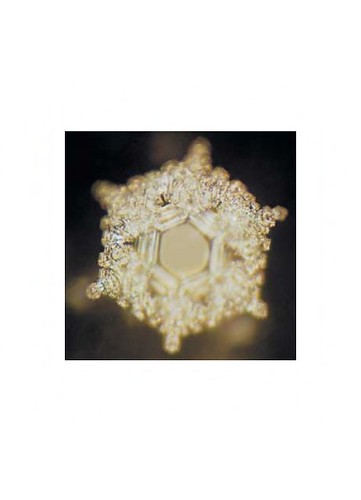
Here is another demonstration. Not from the film, but Dr. Emoto’s book The Hidden Messages in Water. It is the same positive test done with Mozart being played to a test sample.
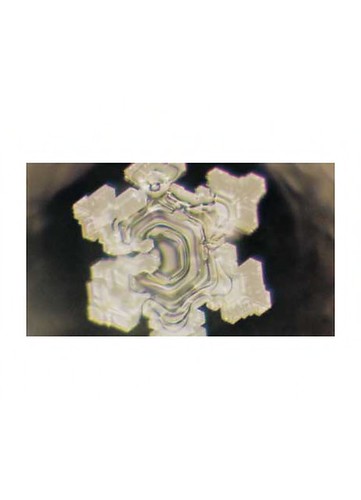
And heavy metal…
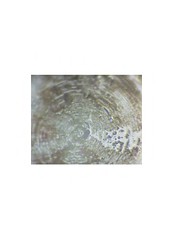
Now look at what happens when the intention changes. The following test (also done in the film) is entitled You Make Me Sick, which was placed on a piece of paper and attached to the glass containing the water.

According to the What the Bleep Official Website:
“What has put Dr. Emoto at the forefront of the study of water is his proof that thoughts and feelings affect physical reality. By producing different focused intentions through written and spoken words and music and literally presenting it to the same water samples, the water appears to "change its expression" (http://www.whatthebleep.com/crystals/).
Now lets return to the idea of intention. If water is affected in such a sensitive manner, what does this say about human beings who are 90% water? I think it’s safe to assume from these examples that our intention does matter. We can affect change upon our readership. But does this mean we shouldn’t write sad stories, or listen to heavy metal? Of course not. I, personally, love a little Foo Fighters in the morning. My wife likes Def Leppard. Rock on with your bad selves. I seriously doubt either of these musical groups has a negative intention in mind. They aren’t out to kill people. Their intentions are probably somewhat on the same path as our own. They want to make money, good music, and enjoy life. Wonderful! But what about the latter?
According to Tibetan philosophy, there is no good or bad. Simply, emotions, or thoughts, that can be observed. There is no good or bad or like Jane’s Addiction says, “Ain’t no wrong. Ain’t no right.” Is this true? I believe it to be. I am also not going to indulge in a discussion better left to existentialism. You can make your own choices about right and wrong. You have your own personal gauge. Trust it. What I am more concerned with is how negative thoughts effect us personally during our writing processes? Is it possible that we can make ourselves “sick”, like above, with the negative thoughts about our writing? Most definitely. I am sure we can all agree that thinking your work sucks doesn’t make you too enthused to continue on a manuscript. In fact, I would go so far as to say, it could cripple you from a potentially viable work. In order to expunge “sick” thoughts from our system, let us first rid ourselves of the duality which has created it, namely the qualitative idea of good and bad.
What makes a good story? Too many professors begin courses with this duality. Although it does create a clarification between the superficial nature of grammatical concerns, sentence structure, vocabulary, transition, character descriptions, and so on, it does little to improve our goal as writers. What can we hope to accomplish by recognizing the opening passage to Hemingway’s “Farewell To Arms” is extraordinary, or that Jhumpa Lahiri has really got that cross-cultural thing down? Yes, we can understand the tools at these writers disposal. The former uses succinct language, he varies sentence length. Jhumpa creates a convincing portrayal of Indian culture with long, detailed descriptions of samosa preparation. Both are good, or we could say technically sound writers. They have all the technical tools to bring characters to life, and we can incorporate them into our personal tool boxes. Go for it! But does this make us good writers? Can we say there are criteria other than the obvious mechanical concerns, that make writing, or for that matter, any art good? To explore this question, let’s look at “Les Mademoiselles d’Avignon” by Picasso. Look at the painting. See if you can make a list of five outstanding points, which make the painting good, other than technique.
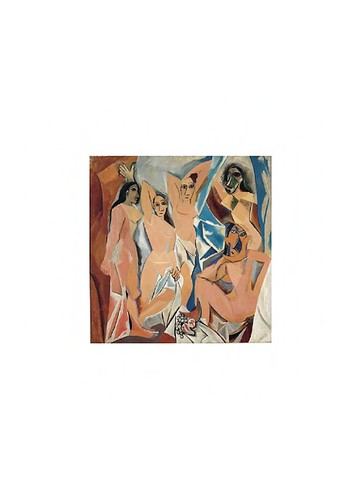
My list is fairly short. I have none. That is to say, no qualifying points that can call this painting remarkable, other than my own opinion. I like the painting. I like the colors. I like his use of multiple painting styles. But if I were going to point to anything other than the technique he used, I’m at a loss. There’s just something about it that I like. But what is that something that makes a piece of art communicate to us?
At Naropa, I had the pleasure of having Bobbie Louise Hawkins address this very issue. She believed art’s scale was based on taste. One individual may like Picasso’s work, and another may not. They may cite certain technical choices as being bad, or not within their tastes, but in the end, if we remove the technical question from the aesthetic viewing pleasure of art what do we have? Taste. You like it. I don’t. An interesting idea. What if we took it a bit further? If taste is the main criteria between what is good and what is not, could we say good art changes our taste? To illustrate this point, let’s compare two examples, one from the writing world, William Carlos Williams, and another from painting, Marcel Duchamp. Let us first begin with the later.
According to Marcel Duchamp’s official website, Making Sense of Marcel Duchamp:
“Marcel Duchamp (1887-1968), the painter, sculptor & author, was associated with Cubism, Dadaism and Surrealism, though he avoided any alliances. Duchamp’s work is characterized by humor, a wide variety of media, and its incessant probing of the boundaries of art. His legacy includes the insight that art can be about ideas instead of worldly things, a revolutionary notion that would resonate with later generations of artists” (http://www.understandingduchamp.com).
In “Fountain,” his urinal sculpture, or what he called “ready-made art” there is no artistic technique. It is simply a presentation of an everyday object outside its traditional setting.
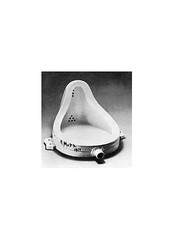
Fountain (1917)
“Conceived for a show promoting avant-garde art, Fountain took advantage of the show’s lack of juried panels, which invariably excluded forward-looking artists.”
“Under a pseudonym, “R. Mutt,” Duchamp submitted Fountain. It was a prank, meant to taunt his avant-garde peers. For some of the show’s organizers this was too much — was the artist equating modern art with a toilet fixture?”
“As surely as it was a prank, Fountain was also, like the other ready-mades, a calculated attack on the most basic conventions of art. Duchamp defended the piece in an unsigned article in The Blind Man, a one-shot magazine published by his friend Beatrice Wood. To the charge that Fountain was mere plagiarism, “a plain piece of plumbing,” he replied “Whether Mr. Mutt with his own hands made the fountain or not has no importance. He CHOSE it. He took an ordinary article of life, placed it so that its useful significance disappeared under the new title and point of view — created a new thought for that object.”
“At the time, almost nobody understood what Duchamp was talking about. But fifty years later everyday objects would be commonplace in art” http://www.beatmuseum.org/duchamp/marcelduchamp.html
I am sure we can all agree Duchamp’s action to take an everyday object outside of its context was the art behind “Fountain.” We, as participants, were invited to view an object from a different perspective. This is not unlike William Carlos Williams’s The Red Wheelbarrow:
so much depends
upon
a red wheel
barrow
glazed with rain
water
beside the white
chickens.
“The Red Wheelbarrow” reminds us about the magical quality of the overlooked. So much depends on it. It is the scene for what the author witnesses. The rain “glazes” it and the “white chickens” roost beside it. Without the wheelbarrow, the scene loses its poignancy. The rain would simply fall to the ground, and Williams would be left without a subject for his poem.
In a similar fashion, Duchamp’s urinal takes an overlooked object and reminds us that it is a part of our everyday lives, and is, to a further extent, not something to be abhorred or considered “non-art.” It has an intrinsic value as an object, and can therefore be made a subject for an art gallery. One could even go so far as to say, that Duchamp and Williams, by moving objects into mainstream galleries and anthologies, were able to realign our previous conceptions about what art was. No one before Duchamp would look at a urinal as art. The same can now be said for red wheelbarrows. Even for art in general – Howls came into being, jars filled with urine, the mundane, the abhorred, all was art.
Now lets look at our initial question. If something such as Duchamp’s urinal was initially considered “bad”, or we could say non-art, how has it become a standard in city museums around the country? So, in other words, how did bad become good? Well, I’ll take a stab at it. Because our previous conceptions of art had been realigned to include an example such as a urinal, technique as a criteria became less important. It was the idea behind the art, which gave it its quality. It was that idea – to take something not necessarily considered art into the mainstream which made it appealing. Well, isn’t this the same for Picasso’s Les mademoiselles? Women painted in such a way had never been done. Painting had changed. Does this mean good art is innovative?
Another interesting question. Lets explore it with one of the truly great artistic mediums – Rock ‘n’ Roll. Throughout rock history we have seen various changes in musical tastes, from Elvis to the Beatles and Woodstock to Lallapalooza. In each movement, there were various innovators who are now standards for our collective idea of what is good: Jimi Hendrix, John Lennon, and, more recently, Kurt Cobain. Listen to the following lyrics in Nirvana’s Smells Like Teen Spirit. Make a list of 5 things that are good about it besides technical considerations. Does it change how we view music? Is it innovative? How?
And I forget
Just why I taste
Oh yeah, I guess it makes me smile
I found it hard
It was hard to find
Oh well, whatever, nevermind
hello, how low? (x bunch of times)
With the lights out it's less dangerous
Here we are now
Entertain us
I feel stupid and contagious
Here we are now
Entertain us
A mulatto
An albino
A mosquito
My Libido
Yeah, a denial
A denial
A denial...
Okay, our lists are a little longer this time. We have two terms which we can use to describe the song without getting technical: innovation and intention. Some of you might point out the historical context of the piece. Maybe, your answer to innovation goes something like this The glitz of hair bands like Def Leppard or Poison were replaced by a true, gritty emotional intensity. Emotional intensity was a particular new idea for the consumer-market-made-satire by the likes of Andy Warhol and the pop movement. It placed a hold on the 80’s manufacturing warehouses. Vintage stores became the rage. Old was good. And yes, it changed our perspective around music. But is this a particularly new idea? I thought we just talked about Picasso, Duchamp, and Williams. Didn’t they do the same thing? Didn’t they shift perspective? How has Cobain been innovative? Yes, it was different. But art is always different. And if it’s constantly in flux, does it have to be innovative to be good?
I don’t know. Maybe. What I can tell you is that there have been many artists who have been admired for the opposite, and that ideas around art are constantly changing. Today, we have boy bands and Britney Spears as a replacement to the Seattle scene. Is this good? Not according to my taste. But for the millions of Americans who have purchased POP or Britney, it is. And if we really want to look at Britney from a fresh perspective, can’t we see her as an innovator? Didn’t she change the image of music after Nirvana? Aren’t they different? Uh, yeah. So hasn’t she been innovative?
Now I think we’re cooking. Let me throw an idea to you. Is it possible that all the artists we’ve talked about are innovators? And from the larger world view that all artists are innovators? Everyone comes from their own perspective. Each person has a different set of experiences that make up who they are. This inevitable comes into their art, whether they were classically trained or self-taught. We are, as writers and creators, bringing our own individual tastes and perspectives into what we create. This action in and of itself is pure creation. It will always be original. So aren’t we always innovative?
Yes. Yes. Yes. My friends. Fellow artists! Welcome. We are all creators. We are all innovative. We just have to come at our art with that perspective in place. We are all creators. We each have our own ways of placing ideas on the page. None is better than the other. That’s just a matter of taste, right? Yes. Yes. Yes, again.
You know I heard an interesting detail from an audio workshop done by Allen Ginsberg on the Naropa Website. He was talking about how Jack Kerouac had a list of 30 steps to be a writer. One in particular was to be the hero of your own stories. Ginsberg said that by making himself the hero, Jack was able to write about anything, ‘the most mundane could be matter for his art. Him going to pick up the trash could be art…’
This is a truly fantastic idea. We are the heroes of our works. How many of you feel this way? Well, let me ask you this…just now we were talking about how we are all innovators, and that because we come from our own set of experiences, we will always be innovative. That felt right then. Maybe, something shifted for some of you. But some of you might not feel the confidence to use this in your work. Okay, some of you might say. I’m an innovator. I get it. But I don’t feel like that all the time. Well, why is that? Aren’t you confident in yourself? Have you been thinking negative thoughts during your process? I hear you. I’ve been there. There are times when every artist can let negative thoughts affect them. They forget we are all innovators. Or, maybe, they’re just caught up in comparing one of their works as better than the other. Yeah, sure. This can happen. But how do we prevent it? Is it possible to not let ourselves get there?
I think so. We’re pretty much halfway there. We have learned that we are innovators, that negative thoughts do us no good as artists, and that the over-all picture of good and bad needs to be suspended, if we want to create in a good place. So what else do we need? Some confidence, huh? How do we create confidence in ourselves?
Well, for starters, we have to let go of the concept of good or bad or right or wrong in our art. The semantics we deal with to identify our tastes, are exactly that. Our tastes. What makes writing good or bad is dependent on our ability to suspend this duality during the writing process, and follow our own instinctual triggers when it comes to the choices we make. By creating a duality between good and bad, before we place the pen on the page, we are inevitably setting ourselves up for writer’s block, a negative self-image, and even worse, the idea that we are not writers to begin with. In order to change that you have to ask questions about your process, discover what is right for you, and let your own personal gauge direct you to your next masterpiece. Good and bad is simply a concept. Love and gratitude is an intention. Creating a space where this is possible is our responsibility to ourselves. And there is only one way to do that – write! Here are several exercises I have found that are useful in creating this space of freedom. Try them for yourselves. I leave it to you.
1. Come up with 10 things that will make you more confident about your writing.
2. What inspires you? A tree? The way your dog always lifts his left leg to take a piss? Describe this object of inspiration. Let this piece of inspiration take you where it will. Why does it inspire you? Is there a story behind there.
3. Look at your ancestry, your history. Make a map of your lineage.
4. Make a map of your writing. When did you first fall in love with a book? When did you write your first poem? Make little drawings of you as a kid during the moment or just make a list. Have fun.
5. You are the hero of your story. Everything happens as you want it or not. You create the world. It can be complete fantasy or rooted in reality. Whatever you want. Write until your fingers hurt.
6. Go take a walk in the woods or down a city block. Notice everything. When you come home, describe your journey. If this leads you to a memory, go there! Or if you find yourself in another story, go with it.
7. If you’re ever stuck, remember that we are all innovators. All art is wonderful. You just have your own tastes. Ask yourself the following questions: Why do I write? What is my over-all intention? Am I having negative thoughts about myself? Are they true? Can you absolutely know they’re true?
8. Sometimes the outside world can jump into our writing. We are worried about bills, boyfriends or girlfriends, wives, friends, husbands, family, etc. Well, deal with it. You can’t write if you’re worried about something. Make a list of what you are upset about with a particular person. Be as petty as you can be. Then go through each statement and ask yourself if it’s true. Can you absolutely know it’s true? Who would you be without that thought? Turn it around. Could you be the one who is being stubborn? Angry? (For more on this line of thought see Byron Katie’s Loving What Is).
9. Keep a secret journal that no one can see. There are no boundaries when you write in it. Put in whatever you want.
10. For Essays: submerge yourself in a topic that inspires you. Ask yourself 3 questions: What is my over-all intention? What is my intention with this particular work? How can I have fun doing this?
11. All art informs each other. Do another art form (dancing, painting, film, etc.). Then come back to your writing.
12. Go to a museum. What inspired you? Describe it. Let it take you into your work.
13. Make a sign that says, “Will write poems for food” or its equivalent. Go out on a stoop or park. Start writing.
14. Have a story party. Invite some friends over. Explain that it’s a story party. You can create the initial spark or someone else could. Ask each person whatever question you want. What was your happiest moment? Tell me an interesting thing that happened today. Go with your gut. Have fun. (For more information on writing parties see Natalie Goldberg’s Writing Down the Bones).
15. Take a photograph from when you were a child, or ask a family member for an old photo album. Describe the photograph you’ve chosen. See where this leads you.
16. Take all your old journals and conserve them into one larger journal; mark dates, emotions, and even leave spaces for future ideas, inspirations, interesting vocabulary (quotes), language, and whatever else you can think of.
17. Timed writing is an interesting tool. Try it out. Write for 10 minutes without stopping. Take a break. Then repeat as many times as you wish.
18. Make a list of what inspires you. Post it in your writing space.
19. Write on something you wouldn’t ordinarily use as a writing tablet: an ugly, ridiculous journal you would never buy, a refrigerator door, a cardboard box, old newspapers, canvas – cut them into pieces if you like. Make circles, triangles, whatever.
20. Keep books, photographs, plants, anything that has ever inspired you close to your writing space. If you are stuck on inspiration. Just look around. Remember why you chose the piece. Was there a story associated with it? Are you inspired now? Start writing, samurai.

“Everyone wants to understand painting. Why don’t they try to understand the singing of birds? People love the night, a flower, everything which surrounds them without trying to understand them. But painting – that they must understand.”
-Pablo Picasso, interview in Cahiers d’Art, 1935.
Letter 221.624
Re: Creators and Inspiration
We are all Picasso’s. We are all children. Let go of good and bad. Ask yourself questions about intention. Remember you are an innovator. We are all innovators. Explore your personal stories. Create whatever inspires you. Do it for you. No one else. Enjoy yourselves. We’re doing what we love. Lets rock on with our bad selves.
With All the Love in My Heart,
Pirooz M. Kalayeh
P. S. See you on Mars…


